Liquidambar: description of species and features of cultivation
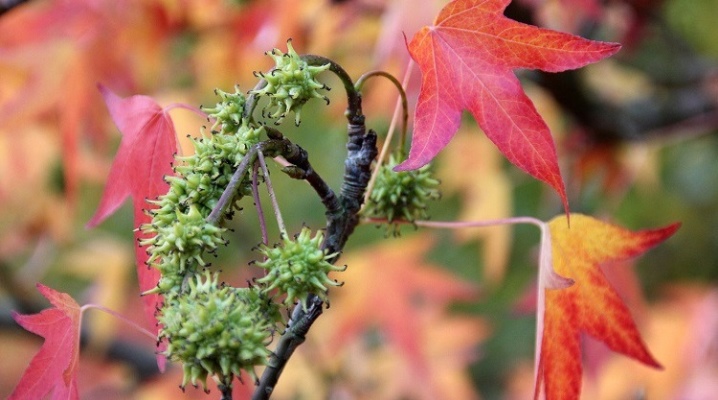
Liquidambar combines several varieties of trees at once belonging to the Altingia family. The plants are distinguished by aromatic resinous bark and carved foliage. They can be grown at home and on your personal plot if you study the basic rules of care.
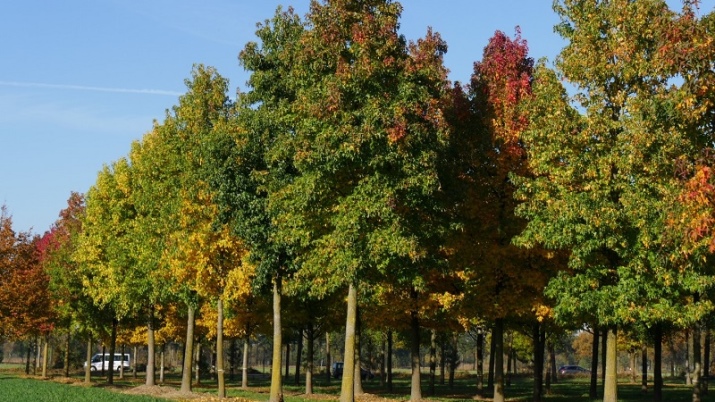
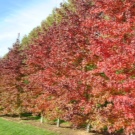
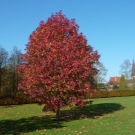
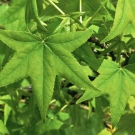
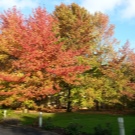
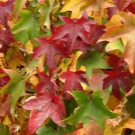
Description
Liquidambar can reach a length of 30 m. Mature trees have trunks up to 1.5-2 m in diameter. The root system is taproot, while the lateral roots are less developed. The bark is gray-brown in color, thick, wrinkled. If a small incision is made on it, a fragrant resin of a thick consistency begins to stand out. Crowns of trees have the correct shape, are wide-pyramidal. Spreading is inherent in old trees. Young shoots can be green or light brown.
The leaves of these trees always attract special attention. They are quite large - from 12 to 18 cm in length, bright green in color. On the branches are arranged alternately. Compared to other trees, the leaves of the liquidambar are very similar to those of oak. They begin to bloom in mid-May - early June, and wither in the fall, changing color to bright yellow, burgundy, purple. In the summertime, the trees begin to bloom. But the inflorescences are inconspicuous, have a pale green color. Subdivided into males and females. The fruits are ligneous, have a spherical shape. Fixed with thin petioles. They can remain in trees until winter.
In Russia, liquidambar can be found on the territory of the Black Sea coast. Also, trees grow in other countries: on the east coast of the United States and parts of Asia.
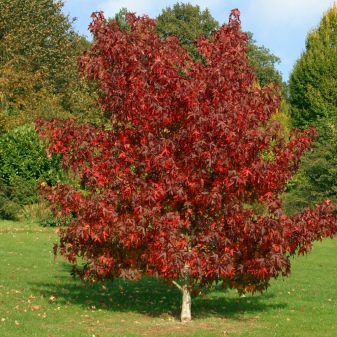
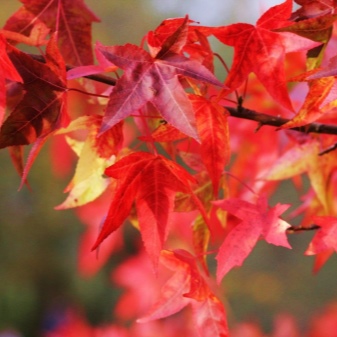
Species overview
There are several varieties of liquidambar.
- Resiniferous. It is also called styrax or amber. It is widely distributed in the southeastern United States, Central America and Mexico. The bark of this species contains a large amount of resin, which has a pleasant smell. Trees can reach a height of 35 m, have large leaves 15-20 cm.
- Oriental. The trees grow to a height of 25 m, while since planting, the annual growth has been from 20 to 35 cm. This is a thermophilic tree that will die if the air temperature drops below -15 ° C. Distributed in Turkey and on the Mediterranean coast.
- Large-leaved. A tree with a spreading crown, up to 38 m. The foliage is dark green, the blades grow up to 20 cm in length.
- Formosky. This species is native to southern China. It is an upright tree with oblong leaves. Compared to other species, it has good frost resistance. So, it can withstand a short-term drop in air temperature to -28 ° C.
These are the most popular varieties.
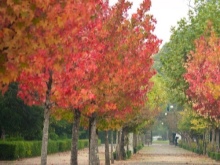
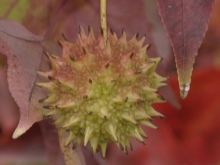

Landing
For planting liquidambar, a place is allocated on the site that is well lit and protected from the wind. These trees are intolerant of drought and excess lime in the soil. They do not pay attention to acidification and salinization of the soil, as well as excess moisture. In the southern regions, liquidambar can also grow in open ground. But if the temperature in winter falls below -10 ° C, you will still have to insulate. In the middle lane, and even more so in the northern regions of our country, you should not try to plant a tree in open ground, it may not tolerate cold weather. Better to grow in a winter garden at home.
To improve and accelerate seed germination, they can be kept in the sand for about 2 months. After that, the seeds are planted in loose soil to a depth of 2 cm. Crops require abundant watering. The seedlings can then be moved into the ground. To do this, you need to dig holes with a volume of 2 times larger than the existing root system. You need to plant them in such a way that the root collar protrudes from the soil by about 2-3 cm.

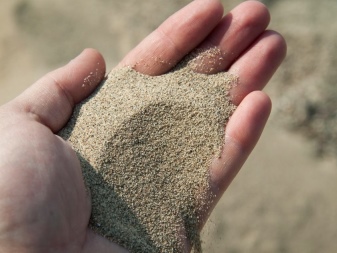
Care
Seedlings love a sunny, ventilated area, as well as moist soil. You can dive seedlings in separate pots at the moment when they reach a length of 5-7 cm. If you plan to grow it indoors, then it is better to put the plant on a window facing southeast. Growing in the suburbs and other cities of the middle lane is possible only in this form. These plants require regular and abundant watering.
In the southern area, the plant can be planted in open ground. Up to 7 years of age for the winter you need to cover with insulation. The crown can be wrapped with thin burlap, and it is better to use spruce branches or mulch to preserve the root system. Mature trees should only be covered when the air temperature drops to -20 ° C. The trees need to be fed periodically. This can be done with complex mineral fertilizers.
It is also necessary to spray the plants with an iron chelate solution.
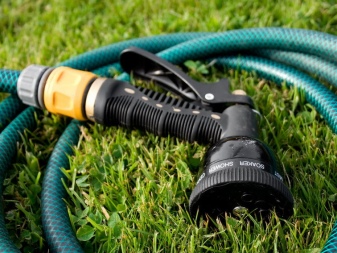
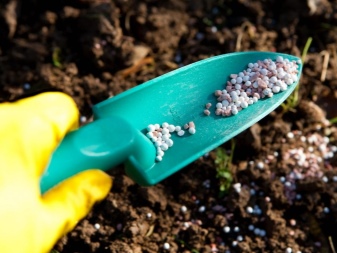
Breeding options
For reproduction, mainly seeds are used. To get an adult plant in a short time, they also use the cuttings method. To do this, it is necessary to cut the lignified shoots with buds. Length - in the range from 15 to 20 cm. It is necessary to cut the leaves from the cuttings, treat them with a growth stimulant and plant them in the nutrient mixture to a depth of 3 cm. Indoors, the plant needs to be grown for 3 years. After this time, the cuttings should give roots. They can be transplanted in containers with soil or in open ground. All care is carried out according to the same rules.
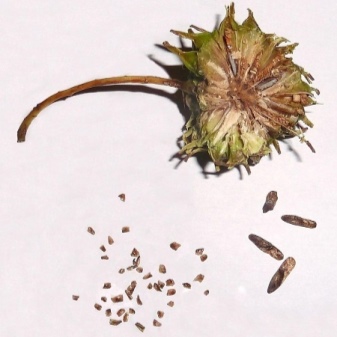
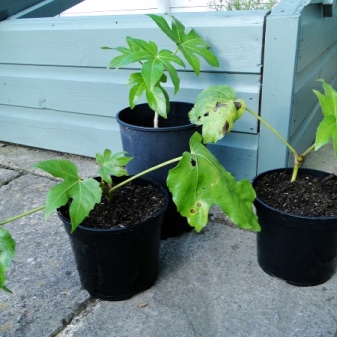
Diseases and pests
Liquidambar is rarely exposed to any diseases. This is due to the fact that the bark tubules contain a lot of resin, which protects the trunk and leaves from all kinds of pests. But in order to prevent diseases such as late blight, the crown of trees can be sprayed with a solution of Bordeaux liquid... Vitriol is perfect for the same purpose.
If you follow all the rules, then in your apartment or on your personal plot (depending on the climatic zone) you can grow beautiful trees rich in greenery - liquidambars. They will become a real exotic decoration of any garden.
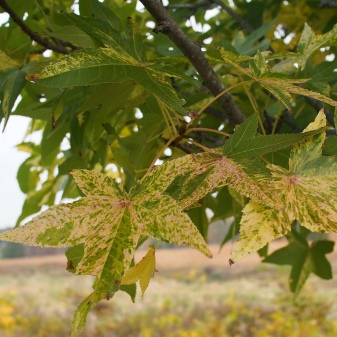
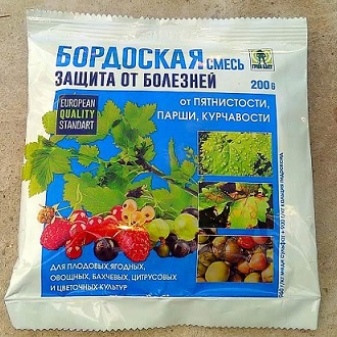
In the next video, you will find an overview of Greensad's liquidambar.



































































The comment was sent successfully.